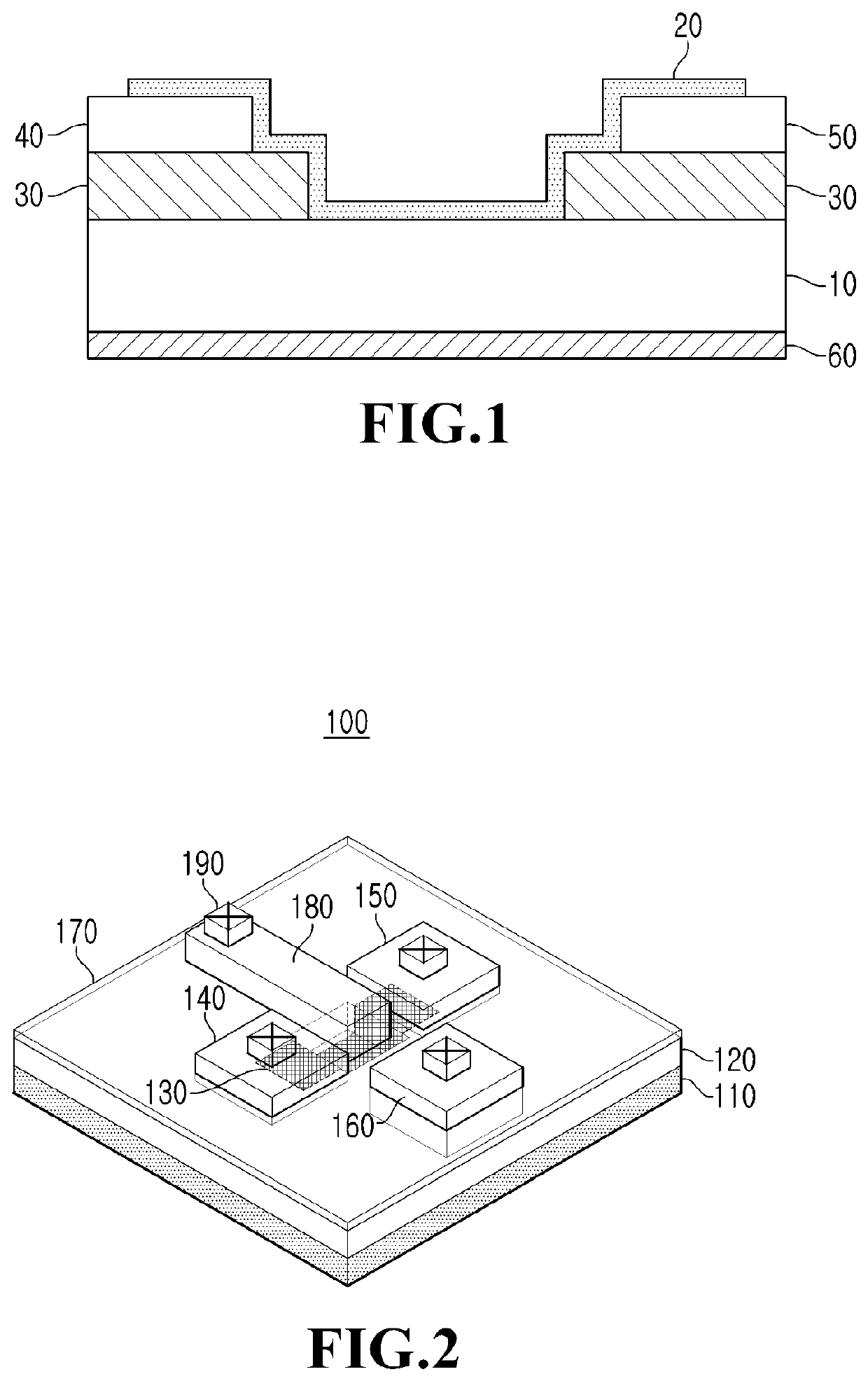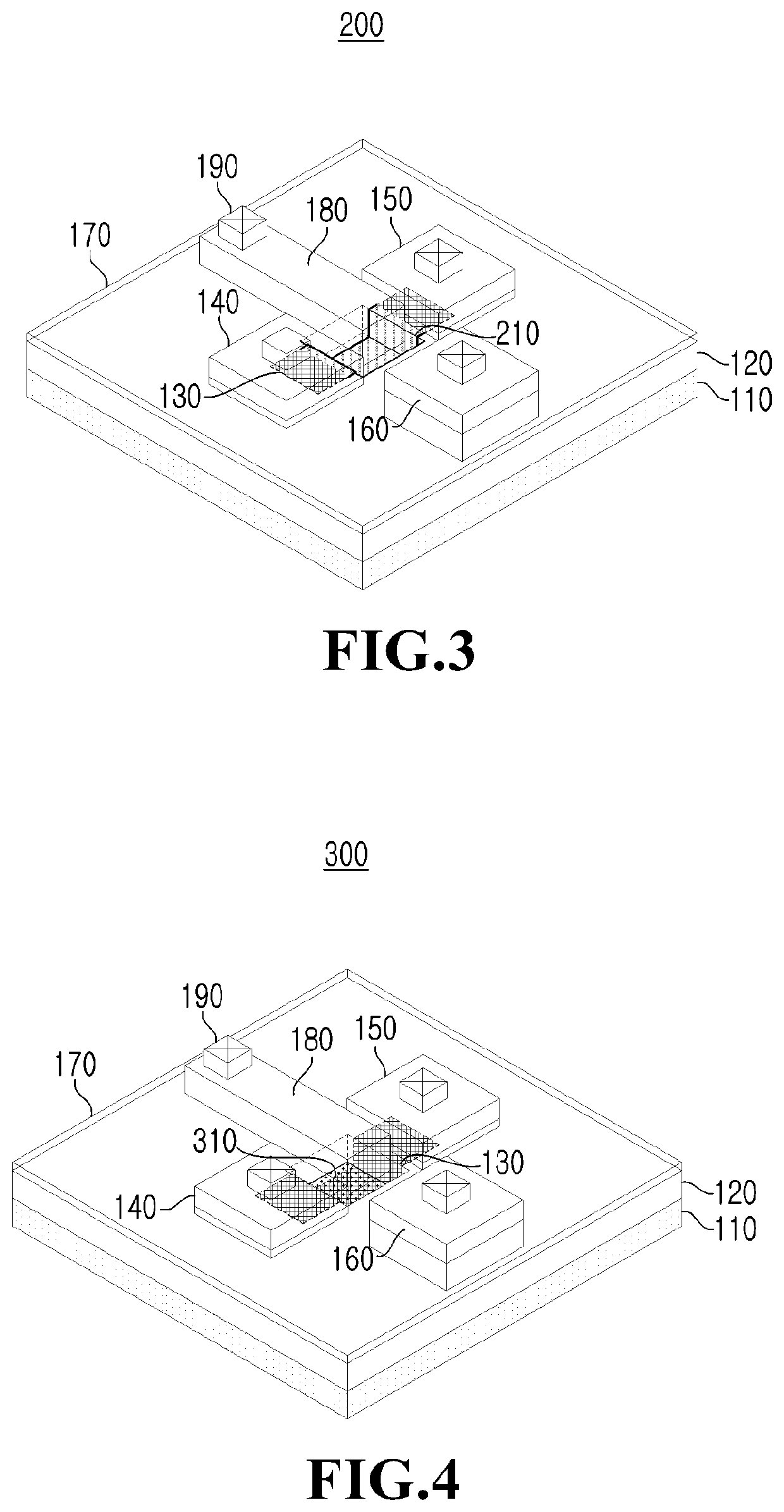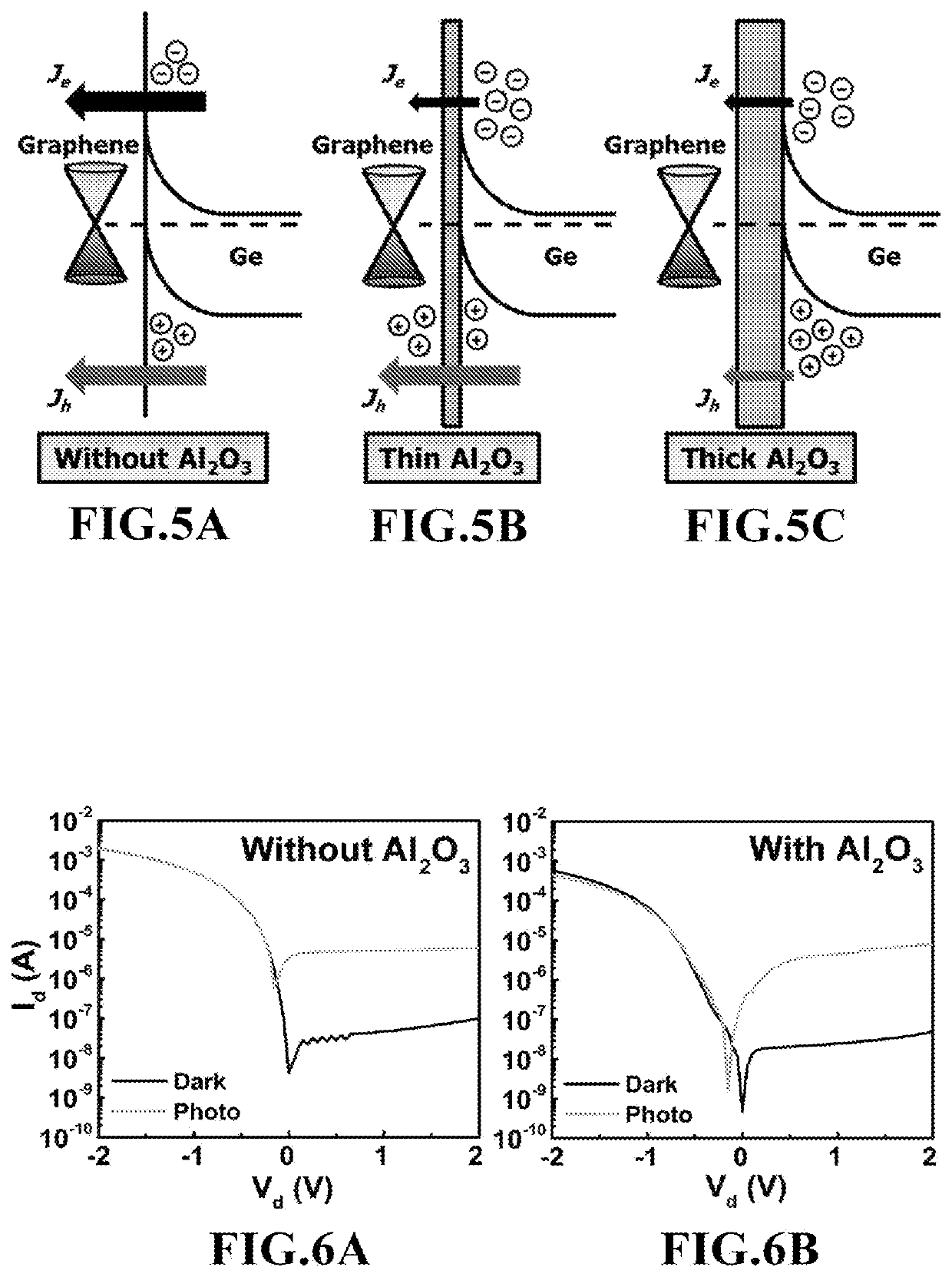Graphene-semiconductor heterojunction photodetector and method of manufacturing the same
a graphene-semiconductor and photodetector technology, applied in the direction of semiconductor devices, basic electric elements, electrical apparatus, etc., can solve the problems of low photoresponsivity, the height of a schottky barrier cannot be precisely controlled, and the fermi level of the graphene layer cannot be controlled precisely, so as to achieve high output voltage, high photosensitivity, and high output voltage
- Summary
- Abstract
- Description
- Claims
- Application Information
AI Technical Summary
Benefits of technology
Problems solved by technology
Method used
Image
Examples
first embodiment
[0069]Referring to FIG. 2, a photodetector 100 according to the present inventive concept includes a substrate 110, an insulating layer 120, a graphene layer 130, a source electrode 140, a test electrode 150, a drain electrode 160, a gate insulating layer 170, and a gate electrode 180.
[0070]The substrate 110 may be a doped semiconductor substrate 110. For example, the substrate 110 may be a p-type or n-type impurity-doped substrate 110, and may preferably be an n-type doped substrate 110. In addition, the substrate 110 may include silicon (Si) or germanium (Ge), but is not limited thereto, and may have other semiconductor materials doped with an n-type impurity.
[0071]The insulating layer 120 is formed on the substrate 110 and serves as an insulating film for insulating the source electrode 140 and the test electrode 150, which will be described later. The insulating layer 120 is preferably made of silicon nitride, silicon oxide, or the like, but may be made of any material as long a...
fourth embodiment
[0110]Referring to FIG. 8, the present inventive concept illustrates a graphene-semiconductor heterojunction photodetector in the form of an array.
[0111]That is, a graphene-semiconductor heterojunction photodetector 400 with the form of an array according to the fourth embodiment of the present inventive concept includes a substrate 110, an insulating layer 120, graphene layers 130 in the form of an array, source electrodes 140, a drain electrode 160, a gate insulating layer 170, and gate electrodes 180.
[0112]The substrate 110 may be a doped semiconductor substrate 110. For example, the substrate 110 may be a p-type or n-type impurity-doped substrate 110, and preferably, may be an n-type doped substrate 110. In addition, the substrate 110 may include Si or Ge, but is not limited thereto, and may have other semiconductor materials doped with an n-type impurity.
[0113]The insulating layer 120 is formed on the substrate 110 and serves as an insulating film for insulating the source elec...
second embodiment
[0163]FIG. 19 is a view illustrating a method of manufacturing the photodetector according to the present inventive concept.
[0164]Referring to FIG. 19, a manufacturing method of the photodetector 200 according to the second embodiment of the present inventive concept is the same as the manufacturing method of the photodetector 100 according to the first embodiment until after the operations of the manufacturing method illustrated with reference to FIGS. 11 to 15. That is, the manufacturing method has the same operations until after the operations of forming an insulating layer 120 on a substrate 110, forming a graphene layer 130 on the substrate 110 and the insulating layer 120, and then forming a source electrode 140, a test electrode 150, and a drain electrode 160 on the graphene layer 130 and the substrate 110. Thereafter, forming a dopant layer 210 on an exposed portion of the graphene layer 130 may be further included. That is, as shown in FIG. 19, an exposed surface of the gra...
PUM
| Property | Measurement | Unit |
|---|---|---|
| dark current characteristics | aaaaa | aaaaa |
| dark current | aaaaa | aaaaa |
| semiconductor | aaaaa | aaaaa |
Abstract
Description
Claims
Application Information
 Login to View More
Login to View More - R&D
- Intellectual Property
- Life Sciences
- Materials
- Tech Scout
- Unparalleled Data Quality
- Higher Quality Content
- 60% Fewer Hallucinations
Browse by: Latest US Patents, China's latest patents, Technical Efficacy Thesaurus, Application Domain, Technology Topic, Popular Technical Reports.
© 2025 PatSnap. All rights reserved.Legal|Privacy policy|Modern Slavery Act Transparency Statement|Sitemap|About US| Contact US: help@patsnap.com



